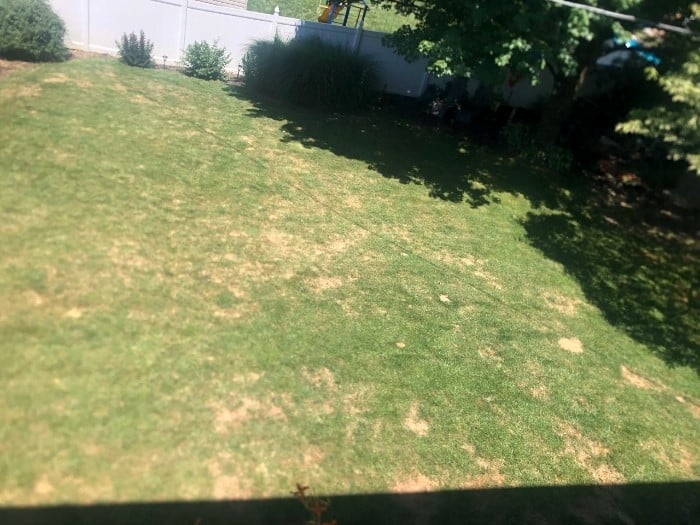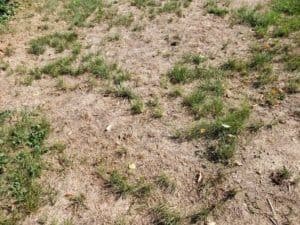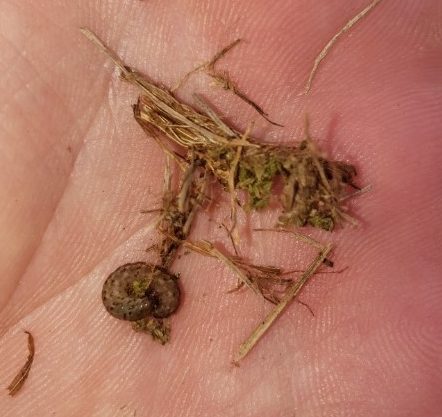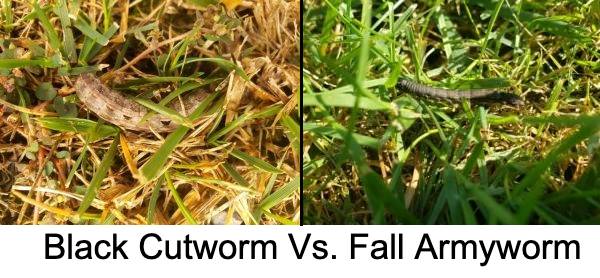Surface-Feeding Insects
Why is My Lawn Turning Brown When it’s Been Raining?
When it’s hot and dry for an extended period, lawns will become less green, and they could also go completely dormant and turn brown. But there could be another problem if it’s between June and September, and there’s been adequate rain (or you’re watering your lawn properly). You probably have lawn-damaging insects or a lawn disease.

There are two types of insects that damage lawns
- Surface-feeding insects live and feed above the soil, in the thatch layer
- Sub-surface-feeding insects are grubs that burrow into the soil and feed off of the roots of the grass
Both types can kill lawns, but they need to be treated differently. For example, the treatment to control surface-feeding insects (like chinch bugs) will not get rid of grubs. The materials used are completely different.
Don’t let surface insects destroy your lawn.
What are Surface-Feeding Insects?
Many people have never heard of, or even seen these pests. They’re very small and hard to detect, and they usually reside at the base of grass blades. But they can destroy a lawn in a short period of time by either chewing or sucking the juices out of the plants.
Some of the more common “surface-feeders” are:
- Chinch bugs
- Sod webworms
- Armyworms
- Black cutworms
- Bluegrass billbugs
- Hunting billbugs
Chinch bugs and sod webworms are the most common surface-feeders in Pennsylvania. They both feed on the grass blades and stems in your lawn. Feeding on the blades is not very noticeable because they feed near the bottom and in the thatch. They do not borrow into the soil.
Chinch Bugs

These pests can be identified by the X on their back. They are tiny and scurry away when they are detected. Adult chinch bugs are typically less than 1/8″ in size. Nymphs are 1/32″, making detection of this insect difficult. If the infestation is identified early, and the lawn is promptly treated to kill the chinch bugs, the grass will most likely repair itself (This is why the inspections are important). In areas where the grass has died, the lawn will need to be aerated and re-seeded.

This lawn in Sinking Spring was also damaged by chinch bugs. The grass was beautiful 6-weeks before this picture was taken!

Sod Webworms

Sod webworm larvae are in the juvenile stage and are hard to find. They hide during the day and feed at night, which is when they damage grass. If these pests are caught early, they can be controlled. The first sign will be yellow grass (that will continue to decline if not treated).
Sod webworms are typically about an inch long or less. This is the stage when they feed on grass stems just above the soil.
You will probably recognize the adult stage. They’ll emerge as small moths that get kicked up as you walk through your yard. When the moths are flying around, they are no longer feeding.
Fall Armyworms

Fall armyworms are tropical insects that cannot survive the winters in Pennsylvania. Sometimes storms will blow them to Pennsylvania (the picture was taken in 2021), but they won’t make it here most years.
Armyworms will devour lawns and crops 24 hours a day for 2-4 weeks. They get their name because, when they begin feeding, they are like an army devastating everything in sight. The good thing is that when they’re caught early, theses surface insects are easy to control.
How to Prevent Lawn Damage from Surface-Feeding Insects
Due to governmental regulations, we can no longer treat surface-feeding insects (SFIs), on a preventative basis before damage occurs. “Preventative treatments” are applied before turf-damaging insects are active and begin to feed on your lawn.
The regulations now require that the “target pest” is present before treating the lawn. As a result, the only way to determine if a treatment can be done is to perform inspections after the insects have built an identifiable population. By this time, there may already be some damage.
At Green Giant Home & Commercial, we’ve developed a comprehensive SFI program. It helps minimize the chance of significant damage to our customers’ lawns, and it also provides treatments and repairs at no extra cost, while staying within the regulations.
Our Surface-Feeding Insect Protection Program
Green Giant’s Surface-Feeding Insect Protection Program is designed to detect low levels of insect activity before noticeable damage occurs. Once the pest has been detected, a curative treatment will be completed as part of the inspection program. Our team will inspect, treat, and repair your lawn as needed. You are covered for anything related to surface-feeding insects – start to finish. Here’s how the program works:
Inspect
3-Seasonal inspections will be performed by a Green Giant pest control technician to determine if there are SFIs in your lawn. These inspections are generally completed in May, July, and September – with occasional variations based on weather patterns.
While this is a lawn care program, our pest control department technicians perform these inspections – due to their expertise in finding hard-to-find pests. Our pest control techs are trained to think like detectives!
Treat
When these lawn-damaging insects are found, Green Giant will treat your grass to eliminate the current population (at no additional charge)
Repair
We will repair any damage caused by surface-feeding insects (at no additional charge).
In the unlikely event that your lawn is damaged by SFIs, Green Giant will repair your lawn. This work is performed by aerating and over-seeding the damaged area(s).
Note: To qualify for our Surface-Feeding Insect Program, a customer must have a lawn care program that includes a preventative grub application.
Do These Pests Come Back Every Year?
The Magic 8-Ball says: “Highly Likely!”
Sod webworms, chinch bugs, and billbugs will almost always come back if the food source (your beloved lawn) is still producing grass. Since the feeding kills the grass, they will continually move to adjacent areas to keep eating. A lawn also provides a good habitat for the insects to live – especially the thatch layer. Chinch bugs and sod webworms both also prefer sunny, hot locations.
Armyworms are hit-or-miss, depending on the weather. When storms blow them to southeast Pennsylvania from the south, there is a chance they do some damage.
The treatments to get rid of these insect populations only last for the season.
How do Surface-Feeding Insects Damage my Lawn?
In various ways, but here are two examples:
- Chinch bugs are “piercing-sucking” insects. They pierce into the grass plant and suck out the moisture. To be even nastier, they also inject a toxin into the plant.
- Sod webworms feed on the blades and other parts of the grass plant – they simply chew it off. In damaged areas, the lawn will look like it was scalped.
This is why annual aerations are a very important part of a lawn care program.
All of our programs are based on the principles of Integrated Pest Management (IPM), which is an environmentally friendly and effective approach to controlling damaging insects, diseases, and invasive plants. Learn more about IPM here.
Worried about these pests? Try Green Giant’s Surface-Feeding Insect Protection Program today!